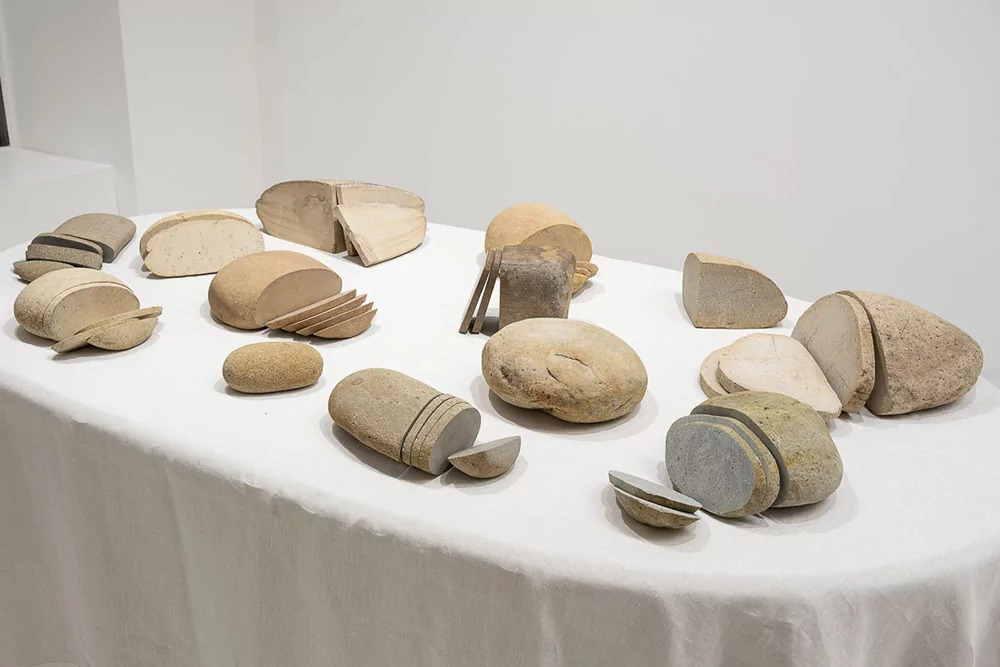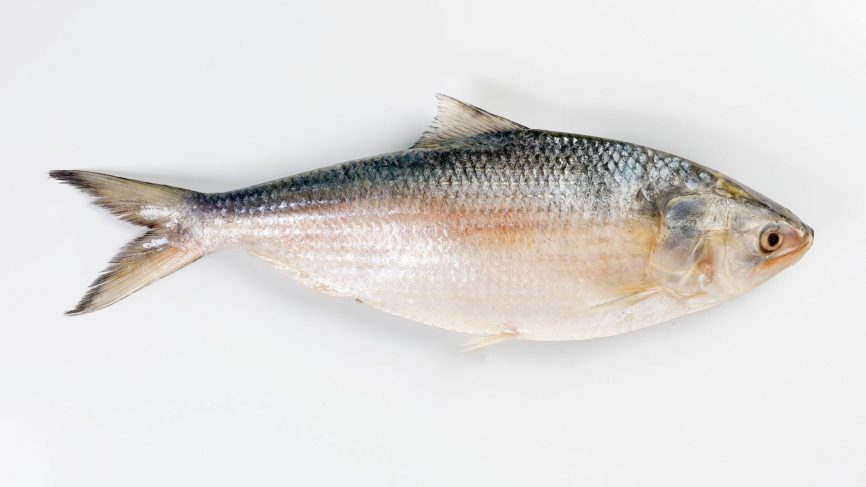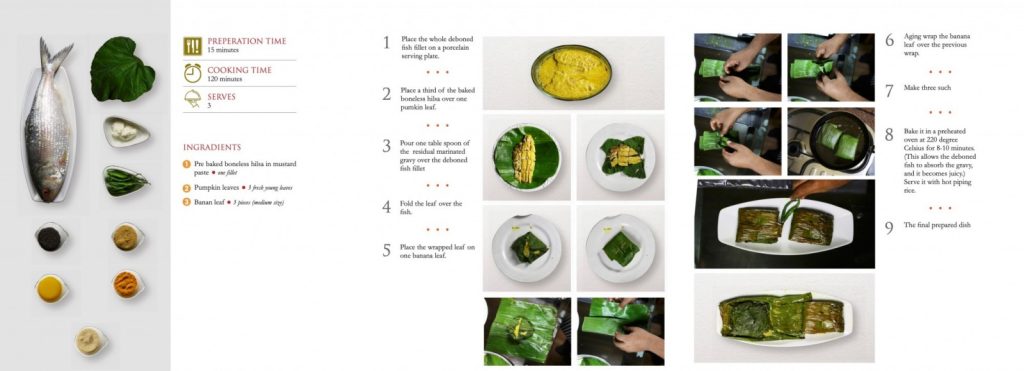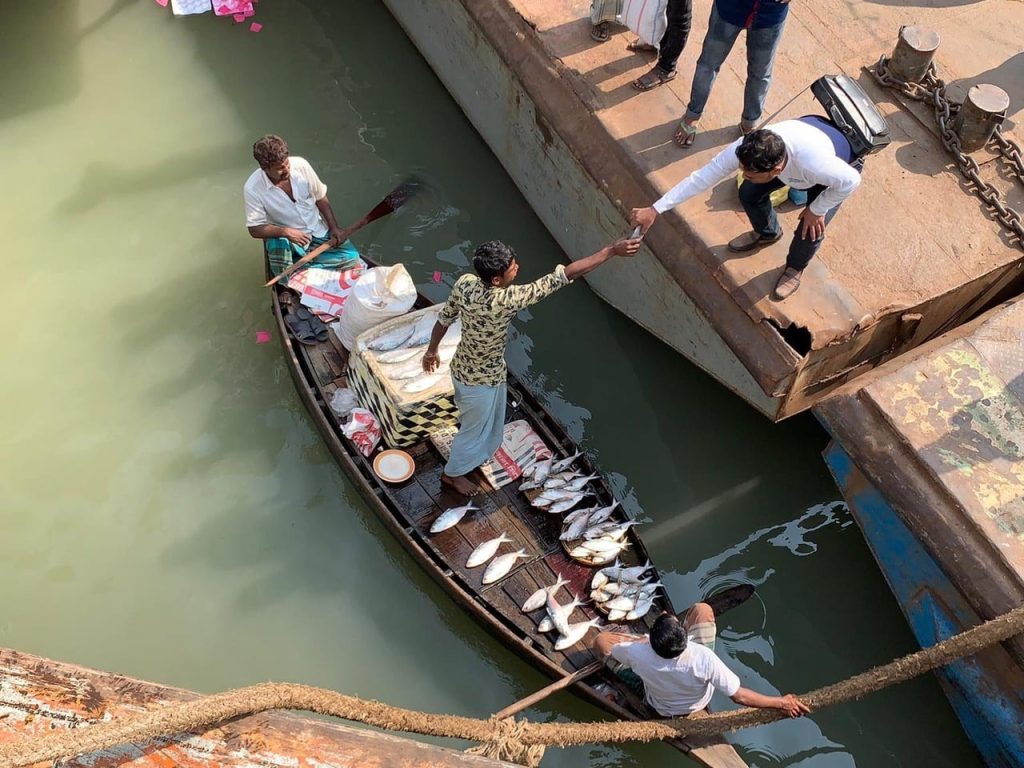Shokher Ilish : Of Nostalgia, Nation-States, and the Cultural Connotations of Food in Zones of Conflict
AUTHOR
Ankita Ghosh
Two weeks into the Russian invasion of Ukraine, contemporary artist Zhana Kadyrova was one amongst thousands of Ukranians who had no choice but to flee their homes in search of safer horizons. While her family moved westwards to Germany, Kadyrova built a temporary home in the Transcarpathian region. Surrounded in safety by the Carpathian Mountains that separate the hamlets in the region from mainland Ukraine, the mountain rivers, their cleansing water and the large mounds of stone over which the water ran captivated the artist’s imagination at first sight. From this emerged Kadyrova’s project Paliantysia (2022). A symbol. A tool of defense. A shibboleth.

Palianytsia, the humble hearth-baked bread that has symbolised Ukrainian hospitality for thousands of years, became a mechanism to distinguish the enemy from a friend during the Ukrainian counteroffensive against Russia. Displayed at numerous exhibitions across the world, it soon became a symbol of resistance and a medium to raise funds for the Ukrainian people and their cause. Presented as an opulent dinner table covered in white and set with palianytsia, ready to be served, Zhanna Kadyrova’s project at the Kochi Muziris Biennale 2022-23 was a cold reminder of the ongoing war, the resultant displacement, and the minuscule quotidian ways in which the current conflict continues to shape the region’s social and cultural life, while our normal lives continue.
Like all moving art projects that prompt us to think further, Kadyrova’s Palianytsia is unique in many ways. Conceptually simple and easy to assemble, it inspires one to think critically around anthropological notions of regional cuisines. For the artist, the creative process was cathartic in many ways. It added to the dialogue around the Ukrainian cause, while giving shape to her own memory of the war. She says,
“For the first 2 weeks of the war, it seemed to me that art was a dream, that all twenty years of my professional life were just something I had seen while asleep, that art was absolutely powerless and ephemeral in comparison to the merciless military machine destroying peaceful cities and human lives. Now I no longer think so: I see that every artistic gesture makes us visible and makes our voices heard!” (Palianytsia, 2022)
Kadyrova’s project – in interrogating the aesthetics of local culinary practices – spoke to my interest in the socio-cultural connotations of what makes it to our plate. In a country with over twenty different regional cuisines, each replete with its own history, food is considered an important element of our cultural milieu. The many-layered saga of the Indian subcontinent – different regional kingdoms that reigned for decades, influx of foreigners who came to establish trade and, lastly, the influence of the colonial powers – is powerfully reflected in food and the cultural connotations attached to some of our most loved dishes in India. However, what is often sidelined is the effect of the Partition on the way food habits, cuisines, and ingredients have come to inhabit our kitchen spaces in the present moment.
This essay is an enquiry into the history and socio-cultural heritage of food, its overlaps with other concerns of our historical present and, in particular, the ways in which food itself becomes a shibboleth, especially in zones of conflict. I localize the inquiry to the partition of Bengal, to conversations around food (particularly fish) as remnants from a land left behind, and the contested belongings that are intertwined within everyday experiences of taste and dietary sensibilities. My grandparents, who grew up surrounded by water in Barisal, Bangladesh, were migrants to West Bengal in post-Partition India. Two-fifty kilometres from home, they sought a taste of the land they left behind in the food they cooked, the neighbourhoods they chose to reside in, and the dialect they would break into with friends and family.
Even today, a trip to a typical Bengali fish market will make clear the distinctions between the dietary preferences of bangals (ones with ties to pre-Partition East Bengal) and ghotis (the ones with roots in West Bengal). Food habits are typically different in ghoti and bangal households. This comes out in the spices used, the balance of salt vs. sugar in curries, the varieties of fish that continue to dominate meals, and much more. But perhaps the biggest issue when it comes to the way Partition has affected our food choices is the contested nature of sourcing the diverse elements that make up our diets. So much so that any first-generation migrant who made the move to newer territory will still have the highest degree of nostalgia for the culinary ingredients of their erstwhile home.

Nothing can capture the tenor of this emotion as well as the conundrum around finding the ilish (hilsa) in present-day West Bengal. The fish, considered to be the queen of the piscine world, is embedded in the context of contested claims on the river and the Ganges delta, which facilitates its growth and reproduction. Over its life cycle, the fish is largely found in the deep seas of the Bay of Bengal. However, it travels upstream towards freshwater to lay eggs in water that is more favourable for breeding. Affected by a number of problems including unchecked water pollution, unpredictable climate and unlawful fishing activities, the lifecycle of the ilish is also plagued by another issue – the dam on the Indian side of the Ganges at Farakka, West Bengal and the subsequent water flow that makes it to the Padma River on the Bangladesh side.

Every year, right from the onset of the monsoons, Bengalis give in to the temptation of the smell of freshly-bought ilish being fried in mustard oil. And the Bangladeshi government under Sheikh Hasina is lauded by the media for sending huge consignments of the fish to India, the majority of which makes it to the Bengali fish markets across the state. Hailed as ‘Hilsa Diplomacy’, this is often seen as a gesture of goodwill to plead for a greater share of the water that makes it towards Bangladeshi territory. Bangladesh, having secured the GI tag, has managed to balance conservation efforts with demands for the fish, which is known for its rich flavour as well as nutritional value. Strict enforcement of regulatory laws on fishing and a ban on sourcing the fish during its breeding season have been in place since 2003. Anyone caught unlawfully fishing for small-sized hilsa before it has had the chance to grow is, therefore, duly punished.
However, such is not the case on the Indian side, where fish markets in Kolkata are flooded with khoka ilish (smaller-sized hilsa) all through the year. The dwindling numbers on the Indian side make it hard to believe that the ilish could once be found as far upstream as the Ganges in Allahabad, 900 kilometres away from the mouth of the river. Meanwhile, the catch has gone up in Bangladesh, followed closely by neighbouring Myanmar. According to the BOBLME (Bay of Bengal Large Marine Ecosystem) – an international partnership involving the UN’s Food and Agriculture Organisation and governments surrounding the Bay of Bengal – the hilsa industry is worth billions of dollars globally. Given the high economic impact, one would argue that collaborating with neighbouring countries would be mutually beneficial when it comes to river water usage. The impact of barrages and dams should, therefore, be carefully considered, so as to avoid the relegation of the scenario to a zero-sum game policy when it comes to maintenance.
The hilsa is extremely intuitive when it comes to its breeding cycle, and man-made problems such as dredging, usage of mechanised trawlers for fishing, and lack of respect for breeding cycles continue to disrupt the earlier habitats that this fish used to frequent. The Farakka Barrage and the conflict it creates for the hilsa’s free movement upstream is one that affects people on both sides of the border. The reduced fish catch, coupled with the rapid rise in sea-levels along the Ganges delta has seen the migration of several families who have relied on fishing as their primary mode of earning livelihoods. Interdisciplinary artist Pratchaya Phinthong captures the “conflictual reality” of the famed fish in an intervention titled The Hilsa Project (2020), commissioned by the Samdani Art Foundation for the fifth edition of the Dhaka Art Summit. The art installation captures the present trajectory of the fish, which has undergone several changes since the barrage was set up in 1975.

Similar to the way in which Kadyrova voices larger concerns through a simple item that makes up everyday dietary habits, Phinthong makes use of aesthetic interventions to gesture towards geopolitical questions. The hilsa, as it appears in the artist’s work, is no longer just a marker of culinary tastes but rather, a political, sociological, and philosophical marker of a bifurcated Bengal and its people. Phinthong’s image-making is supported by archival material in the form of reconstructed images around the Farakka Barrage, cookbooks that celebrate traditional recipes of the fish from both sides of Bengal, and other objects collected over the artist’s recce around the Ganges delta. Metaphorically making a case for collaborative arrangements between nation-states, Phinthong’s larger body of work Waiting for Hilsa examines the crucial position of the ilish as a geopolitical tool. Through his intervention, he helps create a dialogue on the importance of water as a source of life and underlines the larger socio-cultural identity surrounding the fish that transcends national borders.
The reality that the ilish inhabits today, its precarious future in the face of climate change, and its impact on ecology is a great starting point when it comes to harnessing geopolitics for the sake of sustainability. Regulatory laws that govern fishing should be made wider-focused in order to facilitate cross-country collaborations. The inherent ability of the deep sea to blur boundaries and illuminate porosities can be seen as a positive here. In fact, these concerns over the hilsa offer great lessons in harnessing and fostering socio-cultural collaborations, especially when it comes to countries and regions that share so much cultural history and heritage. One wonders if that is not enough to call for greater interconnections of a socio-political nature, and perhaps, for more humane bonds amongst neighbours. After all, the massive breach in the Russian-controlled dam in southern Ukraine that led to a flood in the first week of June 2023 holds significant lessons. It reminds us of the porous nature of disasters and the damages that the eschewal of collaboration brings to bear upon all of us, as one large interconnected community, beyond the fetters of nation-states.
About the Author
Ankita is a writer based in Mumbai. With a background in media and cultural studies, she approaches art via its intersections with popular culture, political actualities, and dynamics of power. She has previously written for ASAP | art, India Art Fair, Sahapedia, Rashid Irani Young Critics Lab and Youth ki Awaaz. Her work experience in the arts also includes assisting several organisations with design, documentation, communications, curation, and research. She is presently employed with Asia Society India Centre, where she supports arts and culture programming focused on India and South Asia.

